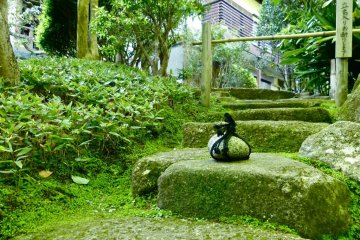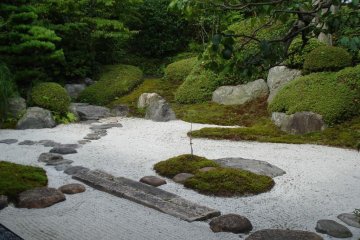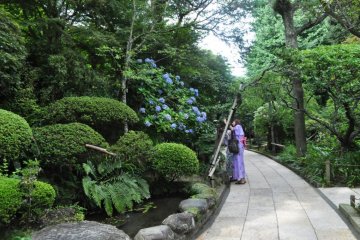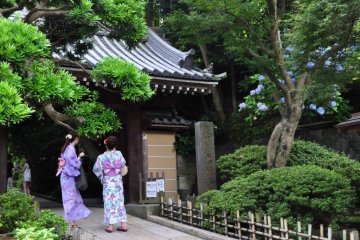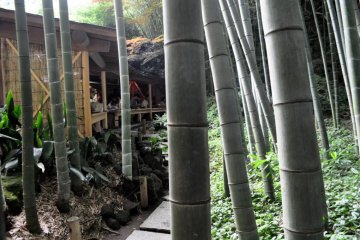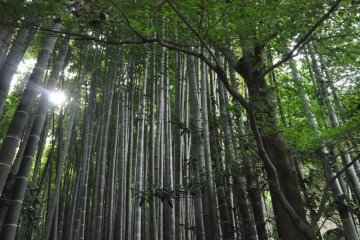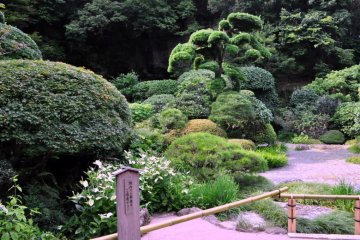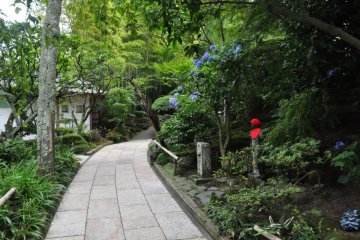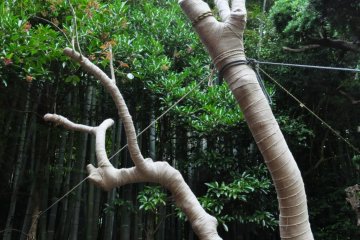You know you are in the right place when a young woman clad in a colorful summer yukata exclaims, “Heeeeeeyyy, with places like this, why bother going to Kyoto?” Despite a few dozen reasons which do pop to mind, I could relate to the moment while standing nearby in the exquisite entrance of Hokoku-ji (報国時) in Kamakura. The temple represents the best aspects of history, architecture and landscaping that Buddhism inspired over the centuries.
Hokokuji was established in 1334 at the start of the Kamakura Era as a place to house the family treasures and pay homage to the grandfather of the first Ashikaga Shogun. The whole encampment, set against a mountain ridge far off the beaten path in the Jyomyoji section of Kamakura, is magnificently maintained.
Upon entering the front wooden gate, an elegantly manicured garden of moss, stones and trees unfolds on the left side while a small hill filled with various flora, including a vivid purple-blue hydrangea on my last visit, moss covered rocks and a trickling spring instill an immediate sense of calm. At the top of the path is a small courtyard surrounded by the main temple buildings in which religious and founding family artifacts of undoubtedly immeasurable value are maintained.
Nice, but the main feature is the manicured bamboo forest in back of the temple. The basic price for touring the forest is ¥200, but we paid the ¥500 surcharge to enjoy a cup of fresh-whisked green tea in the small house tucked in the back of the bamboo.
The towering moso bamboo forest is glorious. Thousands of the towering hardwood grasses rise out of a floor covered in its own fallen leaves as mulch. The delicate green canopy above filters in light gently, creating a surreally pillow-like effect. Two stone paths wind through the grove and our sense of relaxation only grew as we approached the classic wooden tea pavilion in the back left corner, set up so that tables and counters faced out across the bamboo assemblage.
Installments of seasonally blooming flowers are spread throughout the temple grounds, advertising that Hokokuji will offer a different perspective throughout the year. Another interior Zen landscape garden occupies the space between the back of the temple and the start of the forest, and although the graves of the Ashikaga family resting in a cave dug into the mountainside at the back of the forest can only be viewed from a distance, the weight of their history is tangible.
Hokokuji can be accessed by bus or taxi from Kamakura Station, but in good weather, I recommend walking there (or rent a bicycle), passing through Omachi Street, the Hachiman Temple and along the pleasant back streets along the Kanagawa River, which winds through quiet and quite live neighborhoods.




